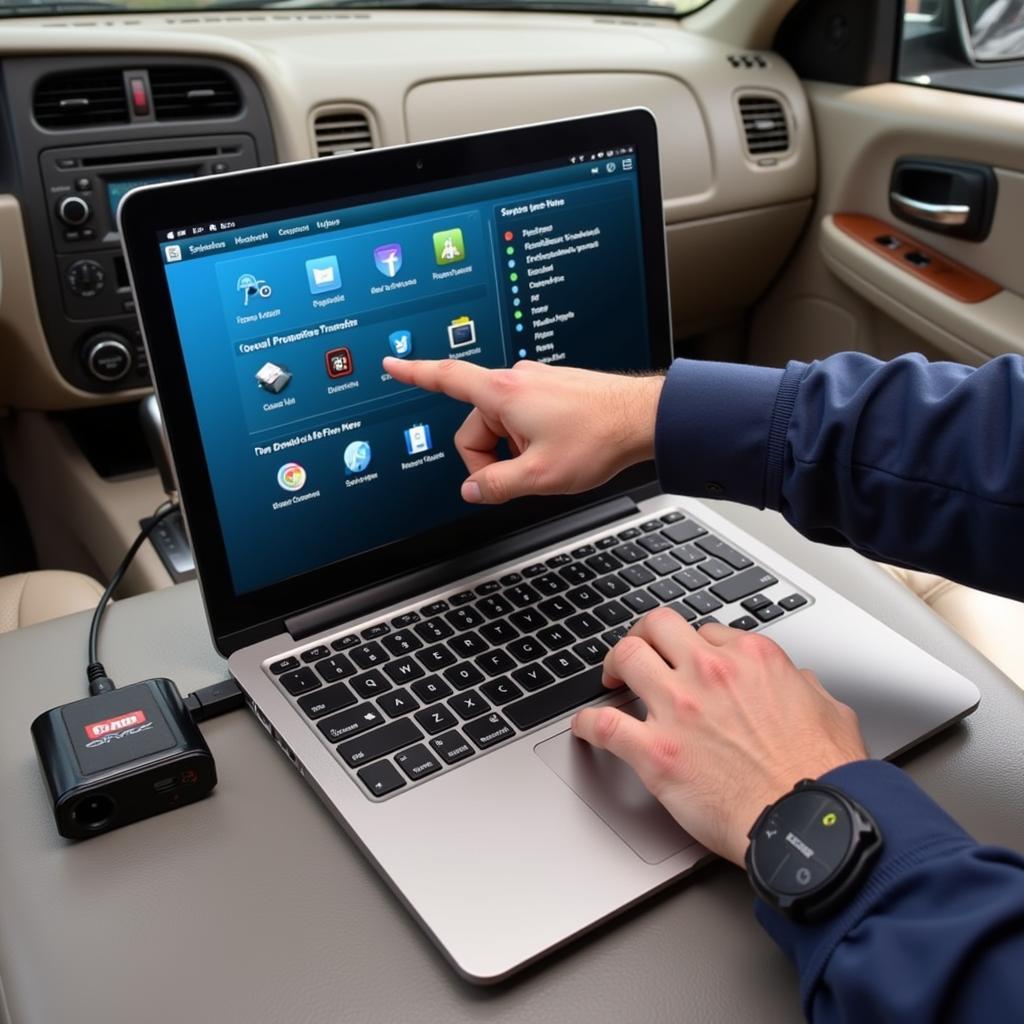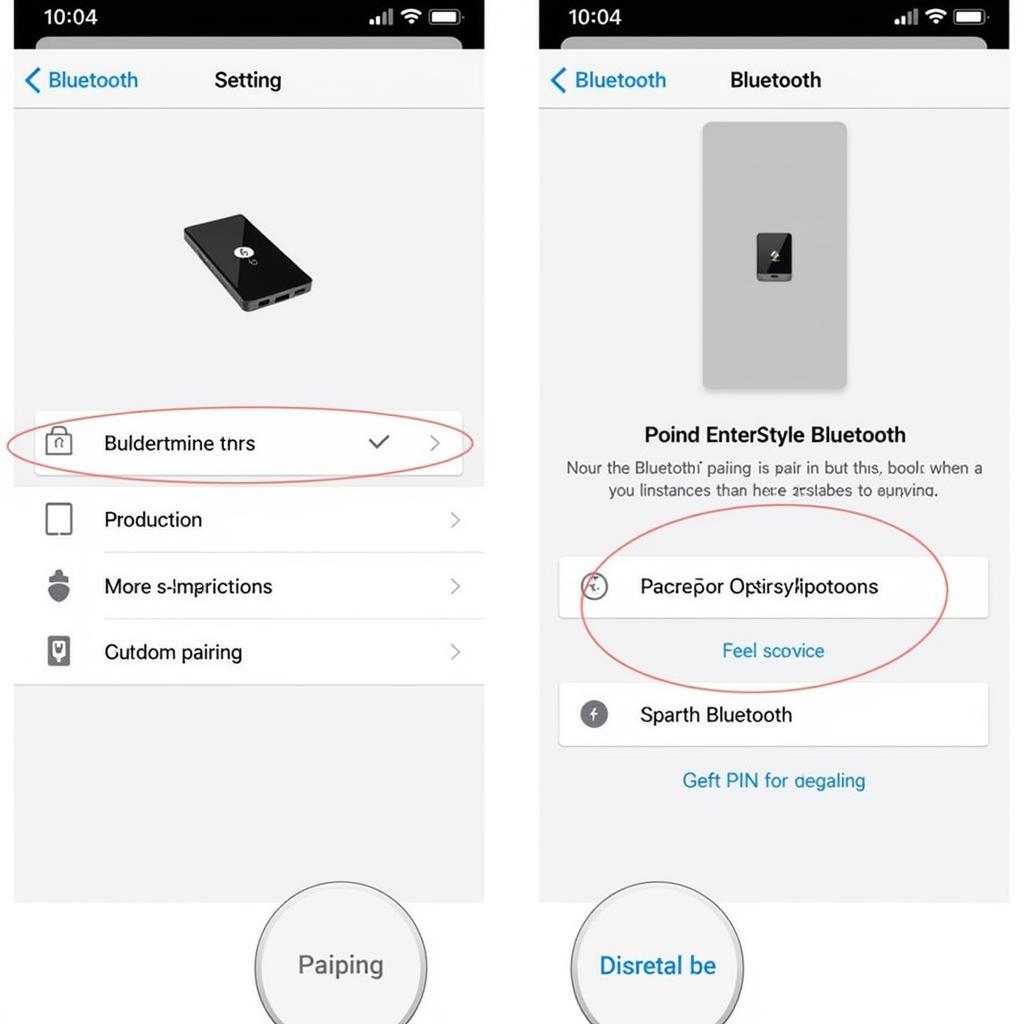The question “does a 2002 Ford Explorer have a passive anti-theft device?” is a common one, especially for those experiencing vehicle starting issues. Yes, the 2002 Ford Explorer does come equipped with a Passive Anti-Theft System (PATS). Understanding how this system works is crucial for troubleshooting starting problems and avoiding unnecessary frustration. This article will delve into the intricacies of the PATS system in your 2002 Ford Explorer, covering its functionality, common issues, diagnostic procedures, and remote programming and software installation options for resolving PATS-related problems.
Understanding the PATS in Your 2002 Ford Explorer
The PATS system in your 2002 Ford Explorer is designed to deter theft by preventing the engine from starting unless the correct transponder key is detected. This system uses a small transponder chip embedded within your key. When you insert the key into the ignition, the transponder transmits a unique code to the vehicle’s computer. If the received code matches the programmed code, the vehicle will start. This passive system requires no action from the driver beyond inserting the key.
How the 2002 Ford Explorer PATS Works
The system revolves around a few key components: the transponder key, the ignition cylinder receiver, and the Powertrain Control Module (PCM). The receiver reads the signal from the key and relays it to the PCM. The PCM then verifies the signal and allows the fuel system to engage, enabling the engine to start. If the signal is invalid or not received, the PCM will disable the fuel system, effectively preventing the engine from starting.
Common Problems with the 2002 Ford Explorer PATS
Several issues can arise with the PATS, leading to a no-start condition. A weak key battery, a damaged transponder chip, a faulty ignition cylinder receiver, or a malfunctioning PCM can all contribute to PATS-related problems. Other potential culprits include wiring issues between the receiver and the PCM or even a problem with the vehicle’s security module.
Diagnosing PATS Issues in Your 2002 Ford Explorer
Diagnosing PATS problems often involves using a specialized diagnostic scanner capable of communicating with the vehicle’s PCM. The scanner can retrieve diagnostic trouble codes (DTCs) related to the PATS, providing valuable insights into the root cause of the issue. Furthermore, a professional diagnostic scan can identify issues with the key’s signal strength, the receiver’s functionality, and the PCM’s ability to process the received signal.
“A common mistake is assuming the battery is the culprit when the engine won’t start. Always remember to consider the PATS as a potential source of the problem, especially if all other electrical systems seem functional.” – John Miller, Automotive Electrical Systems Specialist
Remote Programming and Software Installation for 2002 Ford Explorer PATS
In some cases, reprogramming the keys or updating the PCM software might be necessary to resolve PATS issues. This process typically involves using specialized software and equipment accessible to qualified automotive technicians. Remote programming options may be available, allowing technicians to program new keys or update software remotely.
When is Remote Programming Necessary?
Remote programming can be beneficial in situations where a key is lost, stolen, or damaged. It also comes in handy when the PCM requires a software update to address PATS-related bugs or compatibility issues. “Remote programming provides a convenient and efficient way to address PATS problems without physically bringing the vehicle to a service center in certain cases,” notes Sarah Chen, Automotive Software Engineer.
 Remote Programming of 2002 Ford Explorer PATS
Remote Programming of 2002 Ford Explorer PATS
Conclusion
The passive anti-theft device in your 2002 Ford Explorer is an essential security feature designed to protect your vehicle. Understanding how this system works and being aware of common PATS problems can help you troubleshoot starting issues efficiently. While some diagnostic procedures and programming tasks may require professional assistance, knowing the basics of the PATS can save you valuable time and money. Don’t hesitate to consult a qualified automotive technician if you encounter persistent starting problems related to the passive anti-theft device in your 2002 Ford Explorer.
FAQ
-
What does the PATS light look like in a 2002 Ford Explorer? It’s typically a red light shaped like a car with a key symbol.
-
Can I program a new PATS key myself? Generally, no. Specialized equipment and software are required.
-
My key battery is dead, will the PATS still work? The PATS key uses a passive transponder, not a battery for its primary function, so it should still work. However, the remote locking functions may be affected.
-
How can I tell if my PATS is malfunctioning? Common indicators include the PATS light flashing rapidly, the engine cranking but not starting, or no response when the key is inserted.
-
Is it expensive to fix a PATS issue? The cost varies depending on the specific problem, ranging from a simple key replacement to more complex PCM repairs.
-
What if my 2002 Ford Explorer PATS key is lost? A locksmith or dealership can create and program a new key for you.
-
How can I prevent future PATS issues? Keeping your keys in good condition, avoiding damage to the ignition cylinder, and ensuring regular vehicle maintenance can help prevent PATS problems.

